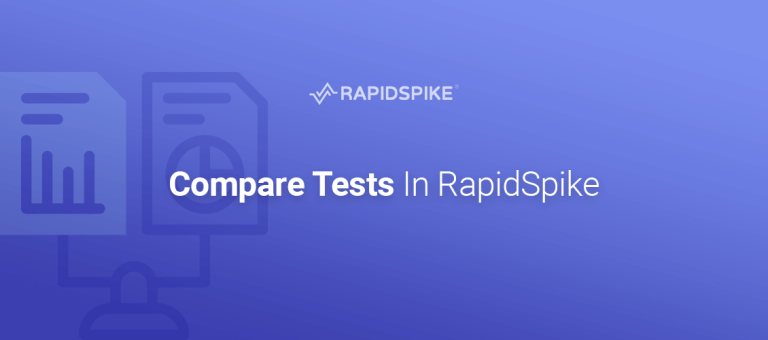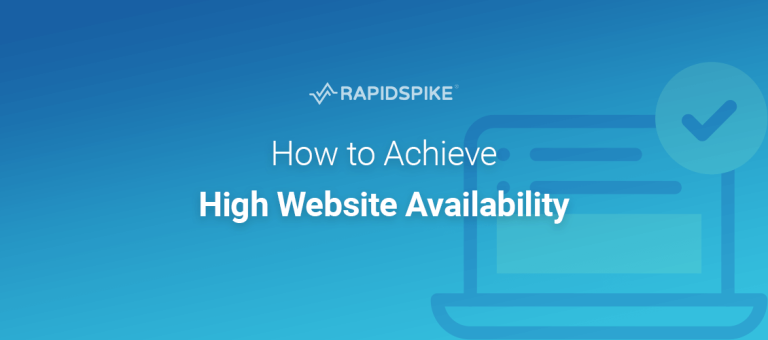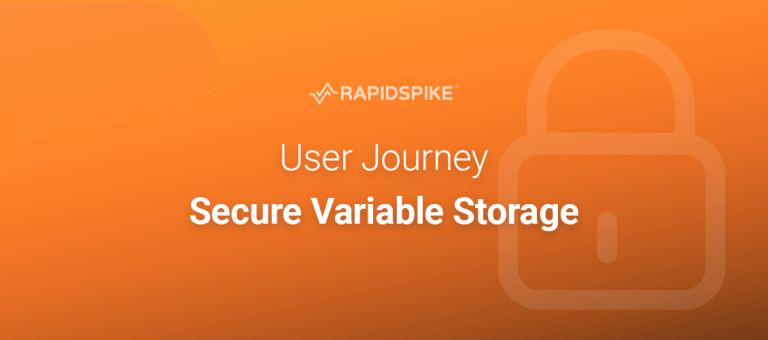So you have an uptime monitoring service in place to flag outages and to measure down time – correct?
I’m sure the answer is yes and to be honest I’m not surprised. Uptime monitoring services are now more affordable than ever and widely used. This has become the norm, but a strategy that relies on uptime monitoring alone is likely to catch you out so I wanted to highlight some obvious limitations to this approach.
So, before I go on – RapidSpike provides uptime monitoring. As such I would strongly advocate uptime monitoring as part of a joined up site availability strategy. We actually refer to it as our “last line of assurance”. In other words – if all else fails, then the uptime monitor will tell you when your site is down.
The trouble with an uptime alert is that this is often too late.
The trouble with an uptime alert is that this is often too late. Any unplanned outage will likely impact the business and will cause unnecessary stress to the web team and your customers alike.
The other problem with an uptime monitor is that it is one dimensional: the web page or device is either responding or it isn’t. This point gets the the heart of the problem. A site may be responding but if the web code is broken – it is as good as down.
The most common problem faced by web enabled businesses is not a total outage but code issues. Systems are constantly changing and updates happen regularly which increases the likelihood of an application layer error being introduced. If there is a code error, the uptime monitor is blissfully unaware that a problem exists. This probably also means that your team is unaware as well.
So how can this be avoided?
The answer lies in adopting a layered approach where more subtle emerging problems can be identified early. A great way to achieve this is by monitoring synthetic user journeys.
A synthetic user journey monitor is a computerised script that mimics a critical user process. Good examples would be:
- Account Creation – can new customers create accounts?
- Customer Login – can customers login?
- Add to Basket – is the checkout working?
- Form Submission – can customers fill in and submit that vital form?
In short, any process that is important to your site’s operational effectiveness should be monitored. For an eCommerce company the checkout is often the most important but for another sector it could be a lead capture form. Either way, monitoring your critical user journeys is a great way to identify subtle issues with your site that could lead onto a more serious problem if left unattended.
I could write pages on this subject but in simple terms by monitoring user journeys, you will:
- Be assured that the web process is working
- Measure and benchmark the process to ensure that it is always performing well
- Identify page errors automatically
- Flag changes in the speed of the journey
- Know when the journey has crashed
Learning about your key processes
The most compelling alert the user journey monitor provides is a journey time alert. In practice systems don’t just fall off a cliff and crash. Usually, days before an outage the application has started to slow down. If you are not monitoring the speed of a process this would often go unnoticed.
The elegantly simple benefit of the journey monitor is that it does just that – it measures the speed of a journey.
In other words, when the journey time is slowing down it tells you! Even if an element has started to slow down it provides you with the information to identify the offending file. This allows you to measure subtle aspects of your site’s DNA so that continuous performance improvements can be made.
User journeys are not perfect and do not have all the answers but they will definitely identify problems that your uptime monitor will miss. Combined these tools provide a very robust site reliability strategy.
I hope this article has been informative and thought provoking. Thanks for your time.






